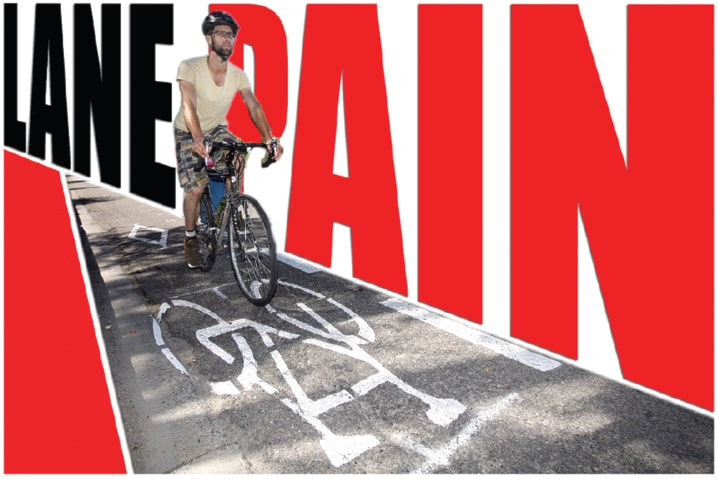Welcome to cycle city, Red Deer.
By now the freshly painted bike lanes have dried throughout the city giving residents a chance to see what the commuter bike project is all about.
The changing of Red Deer’s streetscape to incorporate separated bike lanes will be an adjustment for both motorists and cyclists.
So it’s more important than ever to understand the rules of the road so your commute doesn’t become a traffic nightmare.
The first step to a smooth ride is to recognize that both bicycles and vehicles have a legal right to be on the road and share the same responsibilities.
Drivers of two and four-wheeled vehicles must obey all traffic lights and signs.
Experienced cyclist Mike Kozlowski said cyclists should ride predictably and stay in the dedicated lanes. Kozlowski, who has been cycling for 10 years, said many motorists don’t know how to deal with bike lanes.
“The bike lanes will be nice because really there’s nothing the motorists have to do but keep driving.”
As one of the initiatives under the city’s Integrated Movement Study, city council approved the $800,000 two-year pilot bicycle lane project in its 2011 capital budget. Last summer four kms of lines were painted in areas where there were desired routes, wide shoulders on the road and connectivity to existing trails and could be used to promote the larger pilot.
In April 2012, city council adopted a more comprehensive plan based on public feedback and recommendations from local cycling groups, ReThink Red Deer and other stakeholders.
By the end of the August 20 kms of bike lanes had been painted on city streets creating connections to schools, multi-user trails, recreation centres and the downtown core. There is a mix of bike lane treatments including a solid line and thatched lines.
Coun. Cindy Jefferies said bike lanes legitimize a bike’s presence on the road and solidifies the point that everyone needs to pay more attention and share the road.
She said this will be a huge culture shift for most people. Jefferies cycled when she was in Copenhagen recently and noted how well-accepted cycling is a way of getting around the busy city.
“Hopefully by next spring or summer, we’re a little more adjusted to them,” said Jefferies. “The attitude that bikes are acceptable on the road is an important piece. The biggest challenge is that it is change.”
Jefferies said many people just don’t see very many cyclists out but if they start looking they would be quite surprised at the number of cyclists in the city. Jefferies said people are becoming less and less active so it’s time to start changing the way we move.
“And putting bike lanes in and legitimizing it as a way to getting to school and getting to work helps create,” she said. “We know there is a huge obesity curve ahead of us. And if we don’t get off the couch more or travel in our cars a little less then we (will) have huge health costs coming in the very near future and a generation that won’t live as long as their parents.”
Kozlowski said there are two types of cyclists in Red Deer which makes adapting to change a challenge for everyone. He said the first type rides intentionally and uses the bike lanes.
“They often own a vehicle and chose to cycle because of environmental reasons or because of fitness reasons or social reasons,” he said. “Those people generally in my experience are wearing helmets. They know the rules of the road. They try to be predictable.”
Then there are the other cyclists who may be younger children, teenagers or people who do not own cars for whatever reason and cycle by default.
“I see a lot of people with bags hanging over their handlebars riding on the wrong side of the road against traffic,” he said. “That’s an outdated idea that doesn’t provide safety and it doesn’t provide predictability for the motorists.”
The biggest challenge for cyclists is trying to educate those people who are riding on a sidewalk right beside the bike lane or riding on the wrong side of the road on a bike lane, says Kozlowski.
“We’re not in control of them,” he said. “Just like you are not in control of the guy with the 350 truck buzzing by us giving us a foot of space. My biggest hope is that everyone, the cyclists and the motorists, can recognize there is humanity involved here. It’s not cars versus bikes. It’s people living with people in the same community.”
Kowlowski said cyclists do not want to take space away from motorists or add 10 minutes to their drive to work.
“What I want is to feel safe when I am riding on my bike through the city,” he said. “I want motorists to feel like they are not being threatened by cyclists. Everybody deserves to feel safe.”
crhyno@www.reddeeradvocate.com
